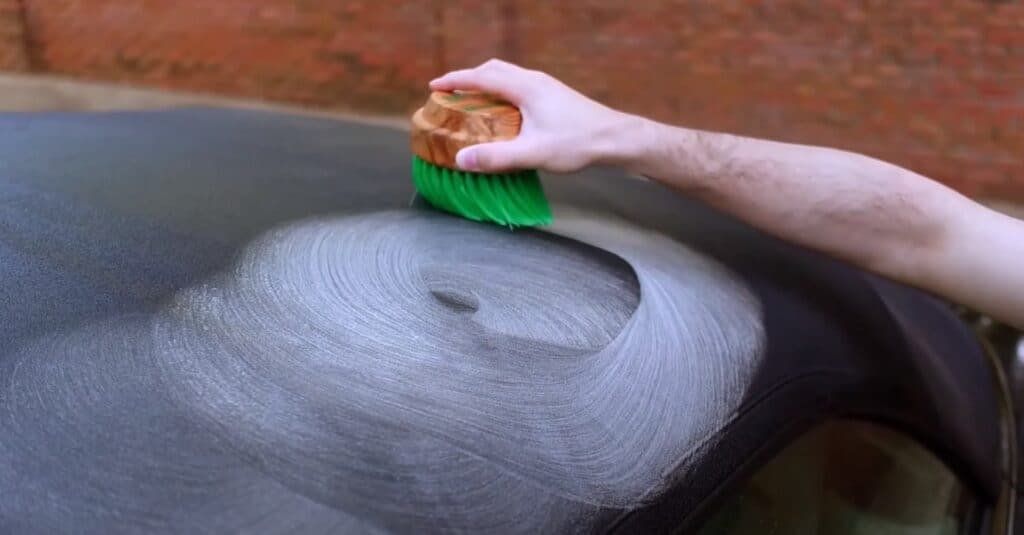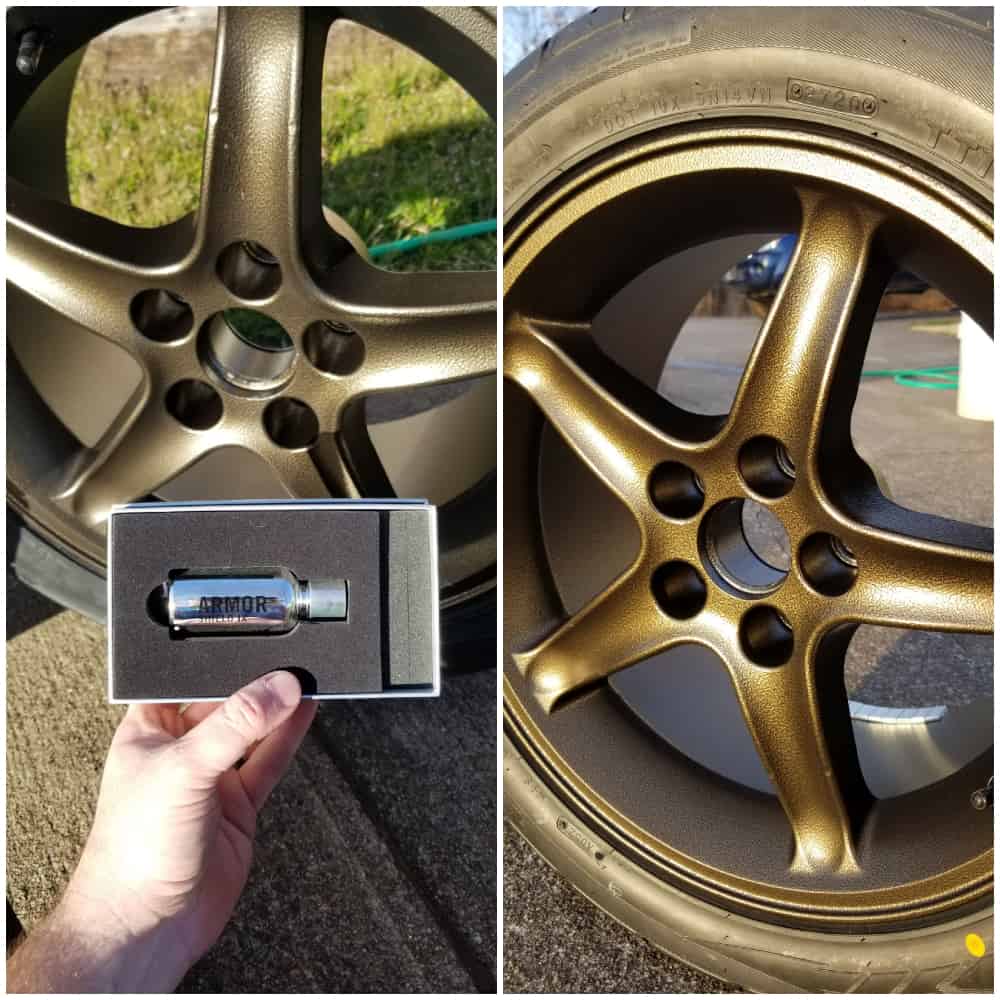The resin in hops is what helps give beer its unique aromatics, bitter tasting notes, and in IPA, tropical fruit undertones. It’s this same sappy secretion that also causes new car owners to cry out in anguish, as they discover that tree resin has baked into the clear coat of their brand new automobile.
Plant secretions provide quite the “sticky situation.” On one hand, humans abhor finding tree sap and resin on their windshields and hatchbacks. But we also adore plant fluids, as they provide us with the waxes, oils, varnishes, lacquers, flavorings, and gums that we rely upon and enjoy every day.
Can you imagine a world without chewing gum, palm oil, rubber tires, or maple syrup? Yeah. Neither can we.
But the gunk that sticks to our automobiles isn’t typically the sort of stuff humans use, and so tree sap and pine resin have been labeled as little more than unwanted “tree ooze.”
If you’ve ever tried to scrape a baked-on glob of pine resin from your car’s hood, you fully understand the magnitude of this claim. This gooey gunk is so sticky, that it’s removal often requires the use of harsh chemicals, products that if not handled properly, can also wreck your vehicle’s clear coat and paint.
However, there are a few ways to safely remove tree sap and resin from a vehicle without damaging it.
In today’s AvalonKing blog, we’ll provide you with a guide that explains how to clean tree sap off your ride, what products and cheats work best, and the best ways to protect those surfaces from future tree secretions.

What’s the Difference Between Tree Sap and Resin?
According to Encyclopedia Britannica, tree sap acts as the blood, liver, kidneys, and digestive tract of a tree. By definition, sap is described as the “…watery fluid of plants…
As for resin, this stuff serves more like a defense shield against infections, insect attacks, and other forms of injury. The United Stated Forest Service describes tree resin almost as if it were a scab, “…plant products that are not soluble in water, harden when exposed to air, do not play a role in the fundamental processes of the plant, and are generally produced by woody plants.”

Can Tree Sap Damage Automotive Paint?
You bet your tree-hugging hippie ass it will. Both tree sap and resin are super acidic and come loaded with sugar, harming aging automotive clear coats upon contact, and becoming even more of a threat when allowed to solidify. If given enough time, this gooey gunk will not just eat into a car’s clear coat, but it will become so difficult to remove, that a complete auto paint correction procedure must be implemented.
Resin and sap aren’t the only offenders either. Plant secretions like gum, mucilage, oils and fats, waxes, and latex can all cause clear coat stains, peeling, and/or discoloring to occur.

How to Avoid Tree Sap
The best way to avoid sap and resin, is to resist the urge to park underneath, or even near trees. While a leafy canopy may protect your car’s exterior from UV rays, and keep your cabin cool on a hot day, it makes your vehicle a prime deposit spot for sap. Sap is super lightweight too, so even parking in the proximity of a tree can result in a sticky anointment on a windy day.
If you have to park under a tree, your top option is going to be to seek cover. If zoning allows it, a pop-up carport or DIY parking garage of some sort will provide sufficient protection There’s also the car cover alternative, which requires a bit more effort on the driver’s end, but will shield a vehicle all the way down to the wheels once affixed.

Steps for Removing Tree Sap from Your Vehicle
So you were afraid that you might singe your ham on your Iroc Z’s custom leather car seats, and decided to park beneath the shade of a massive birch tree. Now you’ve got everything from bird shit and tree pollen, to clear coat scratches and resin embedded on that retro Camaro’s exterior, and you are seriously reevaluating your life decisions.
How in the ever loving fuck are you going to remove all of this crap?
Fear not noble citizen! Safely and successfully removing tree sap starts with moving quickly, and using the right removal methods, which is precisely why we are here today.
First of all, you HAVE to resist the urge to reach for the rubbing alcohol or bug and tar remover. You can’t just spray, wipe the resin away, and then pray that it doesn’t happen another day. These products typically don’t play well with clear coats and paint protectants, so you will need to hand wash and dry the vehicle both before and after removal with the two-buckets-and-a-beer method.
To safely lift tree sap or resin from an automobile, you will need to procure the following items, and then follow the steps listed below.
Tree Sap Removal Supplies
- (3) microfiber towels
- (1) box cutter blade for removing tree sap from glass
- (1) bottle of rubbing alcohol or bug and tar remover
- (1) roll of painter’s tape
- All necessary supplies for washing the vehicle with the two-buckets-and-a-beer cleaning technique
- Your muscles, a few extra beers, and a shit-ton of patience

Step 1 – Wash the Entire Vehicle
Even if it appears that only one small area has tree sap on its surface, it’s always best to play it safe, and wash the whole damn car with the two-bucket car washing method. This will remove any other unsavory contaminants, and with a little luck, maybe even eliminate that sticky tree sap.
Quick Tip: Standing water will cause water spots to form if they are not removed quickly. To negate this issue, keep the vehicle wet at all times, and then dry it as quickly as possible with a series of ultra-plush microfiber towels. You should also try and stay out of the sun, and avoid using hard water at all costs.

Step 2 – Locate and Flag All Tree Sap and Resin
Hand wash and dry complete, crack open another beer, and try and locate any other areas of the vehicle that may be contaminated with tree sap. If you have some painter’s tape, place a small tab near the sap to serve as a visual cue for when it comes time for removal. You don’t want to miss a glob and give it the chance to harden on the surface.

Step 3 – Remove the Sap With Chemicals
If you’re looking to remove tree sap from painted or raw metal, rubbing alcohol tends to work best. As for plastic trim, chrome, and various other painted materials, a high-end bug and tar remover should cut the kimchi just fine.
Here is the process you’ll want to follow…
- Use a microfiber towel and pour a few drops of the rubbing alcohol or bug and tar remover on on it.
- Dab the towel onto the compromised area, letting it soak in for about 30 seconds, keeping the towel pressed firmly atop the sap the entire time.
- Slowly begin to rub the area until the tree sap begins to lift. In some cases, you’ll have to repeat this step a few times. This is where patience comes into play, because over-applying alcohol or bug and tar remover will increase the chances of clear coat damage.
Quick Tip: If the contaminated area is proving to be difficult to remove, use a fingernail to gently scratch the sap into submission.

Step 4 – Wash the Entire Vehicle… Again
To eliminate the risk of destroying your clear coat, wash the entire vehicle again once the sap has been removed. Don’t forget to follow-up with a thorough microfiber toweling to avoid any ugly water spot formations!

Step 5 – Inspect and Protect
Unless you have a 9H-rated nano ceramic coating, paint protection film (PPF), vinyl, paint sealant, or some form of Superman skin wrapped around your vehicle, chances are those tree sap removal methods have messed with your paint’s shine.
Car wax and spray-on paint protection products merely melt away under the influence of alcohol and bug and tar remover, so you’ll want to apply something much stronger. This is just but one of the many reasons why more and more people are opting to install nano ceramic coatings like Armor Shield IX on their vehicles.

Removing Tree Sap and Pine Resin From Glass
Tree sap doesn’t just land on painted surfaces. It’s equally inclined to anoint windshields, passenger windows, and side mirrors with gooey globs of grossness as well.
If this happens, DO NOT use your windshield wipers. This will merely smear that shit all over your glass, which may impair your ability to see. Sap also has the ability to stick to the wiper blades themselves, rendering them nearly useless once fully dried.
To safely remove tree sap and resin from automotive glass, follow the steps above, and add a box cutting razor blade or a paint surface scraper into the mix to help scrape the deposit away. Once that’s complete, break-out your rubbing alcohol or bug and tar remover, and hit whatever stubborn residue is left behind with a bit of elbow grease and a clean microfiber towel.
Finish things up with a dash of glass cleaner and a separate rag, then stand back to admire your work, knowing that a nano ceramic coating could have kept that tree sap from sticking in the first place.

Parting Shots
When it comes to keeping tree sap and pine resin off your car, the best form of protection is prevention. Prevent the sticky stuff from solidifying on your vehicle’s exterior by avoiding trees altogether when possible, and then be sure to apply a paint protection product to your ride.
Ceramic coatings are particularly good at repelling tree sap and resin, as the nano-technology within them creates a hydrophobic effect that is insanely slippery. It’s like coating your car in liquid quartz crystals, and then allowing it to harden to the point where anything that touches the surface just bounces or rolls away.
So pick up a bottle of AvalonKing’s Armor Shield IX, and say Sayonara! to tree sap. A nano ceramic coating with this level of 9H hardness will not only keep your car clean and protected from tree sap and resin, but it will shield it from all other manner of contaminant for at least 2 years… guaranteed.












